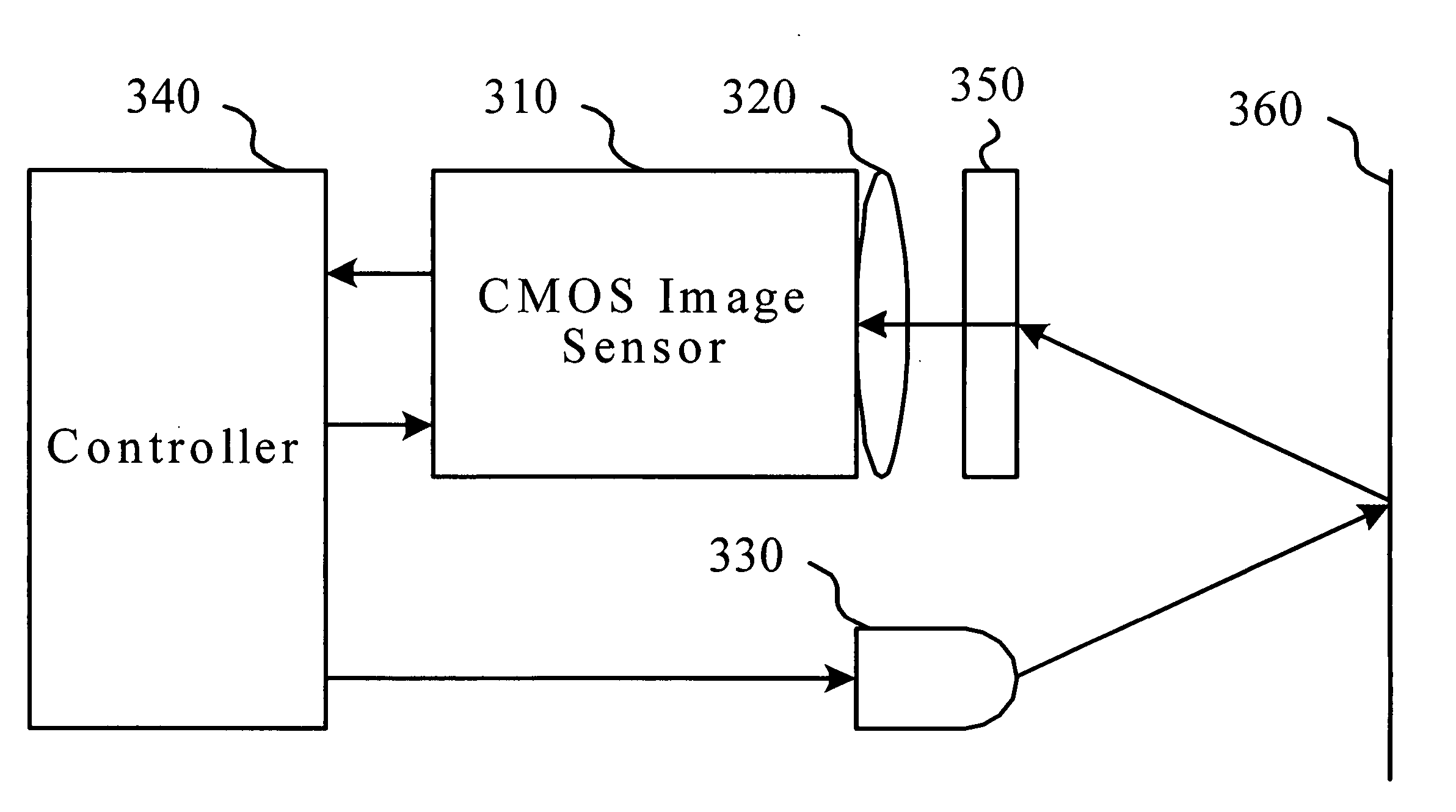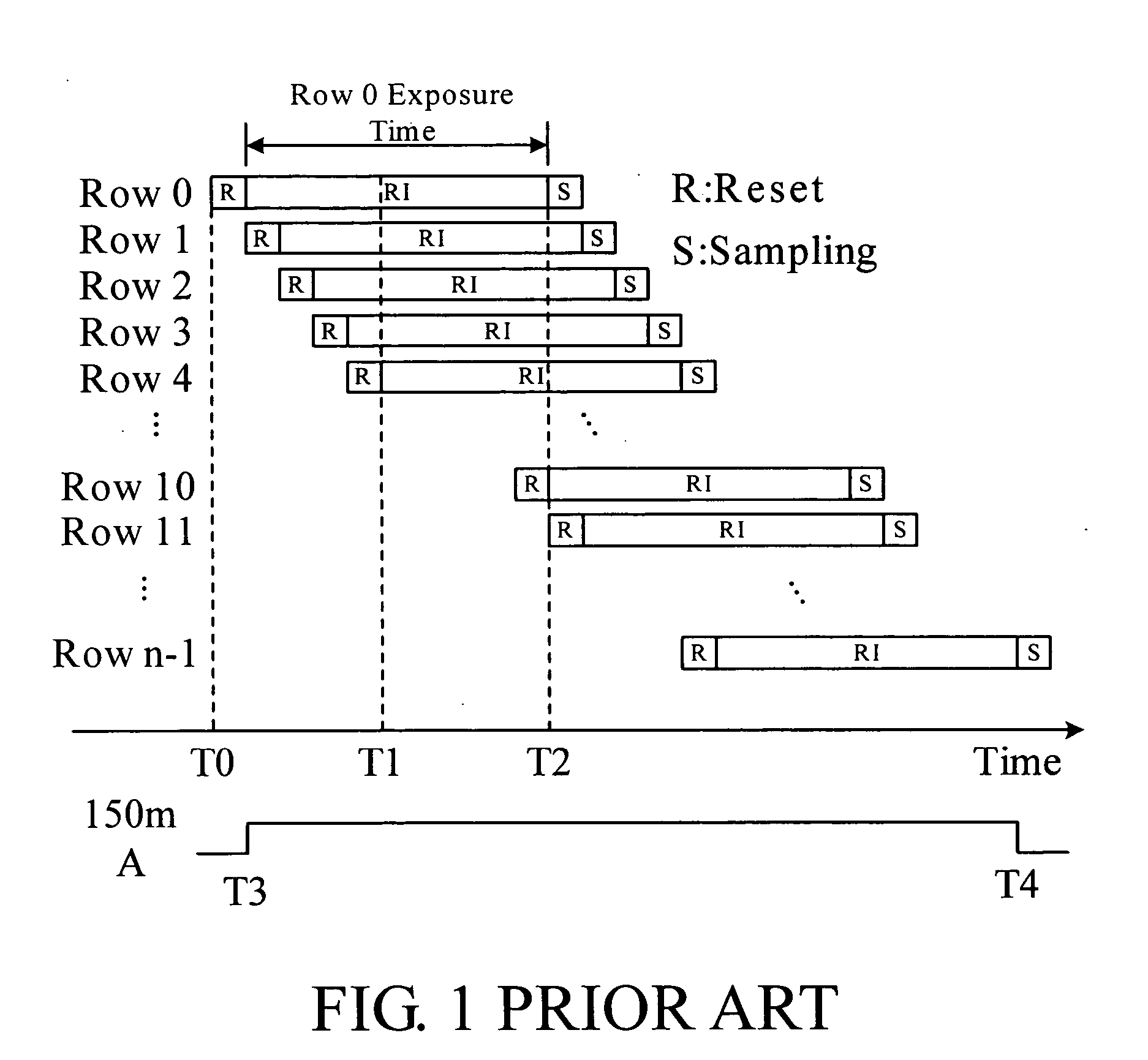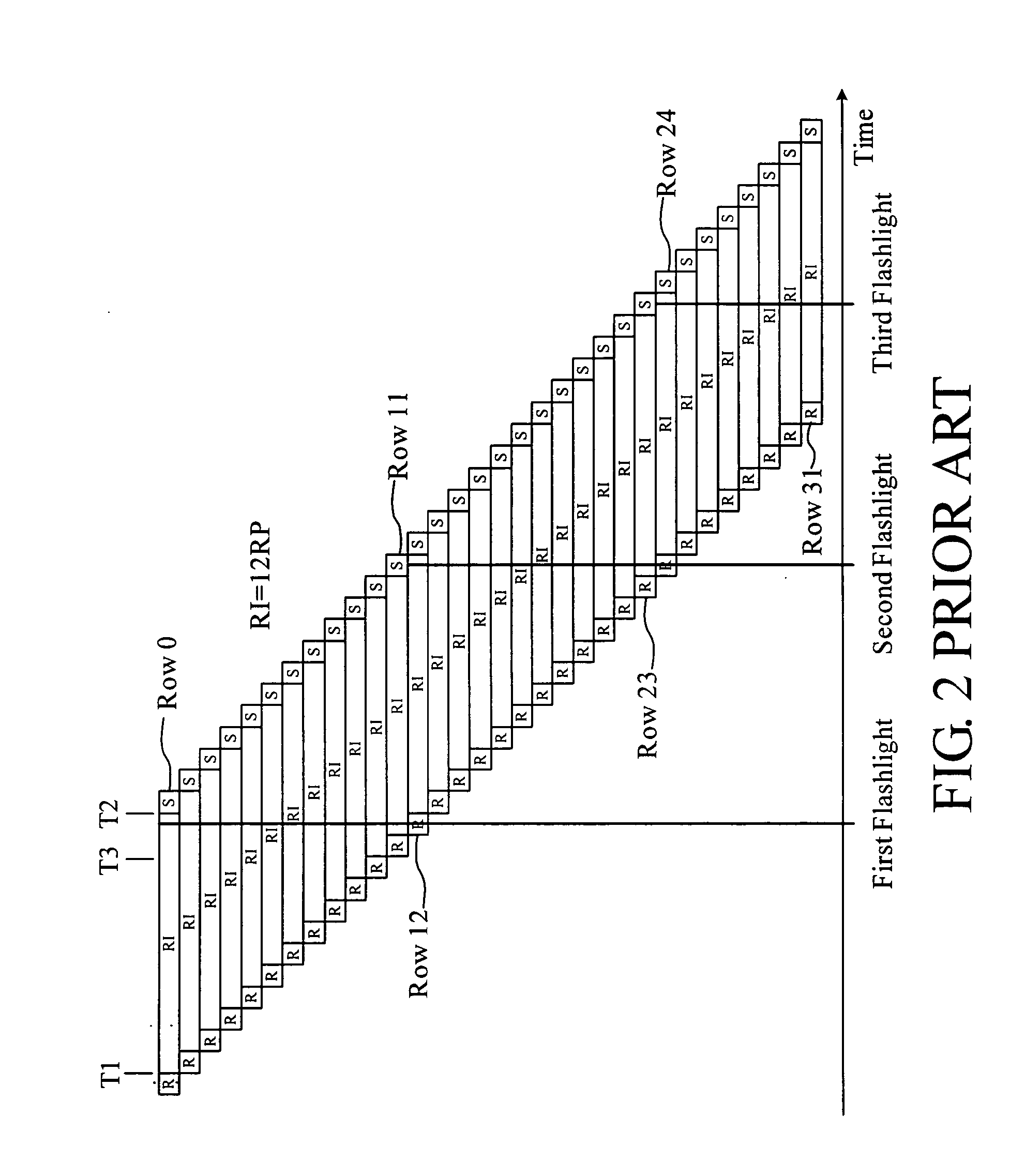Exposure control system and method for an image sensor
a control system and image sensor technology, applied in the field of image sensing, can solve the problems of increasing the distance between the illumination source and the illumination source, increasing the cost of the illumination source, so as to achieve the effect of increasing the capture image quality
- Summary
- Abstract
- Description
- Claims
- Application Information
AI Technical Summary
Benefits of technology
Problems solved by technology
Method used
Image
Examples
Embodiment Construction
[0021]FIG. 3 is a block diagram of an embodiment of an exposure control system for an image sensor in accordance with the invention. As shown in FIG. 3, the system includes an image sensor 310, a convex set 320, an illuminator 330, a controller 340 and a light separator 350.
[0022] The image sensor 310 is a CMOS image sensor having plural photosensitive pixels in a 2D matrix arrangement. The CMOS image sensor 310 may have 640×480, 659×494, 752×480 photosensitive pixels, and the like. For different applications, the CMOS image sensor can set its active region to an appropriate size, i.e. a sub-region of the plural photosensitive pixels. For example, an active region of 320×240 is set for a 640×480 CMOS image sensor. In this embodiment, an exposure is operated in a sub-region of the plural photosensitive pixels, and the sub-region can have a size of 320×240, 96×96 or the entire region.
[0023] The illuminator 330 produces a flashlight as a light source for exposure to the image sensor ...
PUM
 Login to View More
Login to View More Abstract
Description
Claims
Application Information
 Login to View More
Login to View More - R&D
- Intellectual Property
- Life Sciences
- Materials
- Tech Scout
- Unparalleled Data Quality
- Higher Quality Content
- 60% Fewer Hallucinations
Browse by: Latest US Patents, China's latest patents, Technical Efficacy Thesaurus, Application Domain, Technology Topic, Popular Technical Reports.
© 2025 PatSnap. All rights reserved.Legal|Privacy policy|Modern Slavery Act Transparency Statement|Sitemap|About US| Contact US: help@patsnap.com



